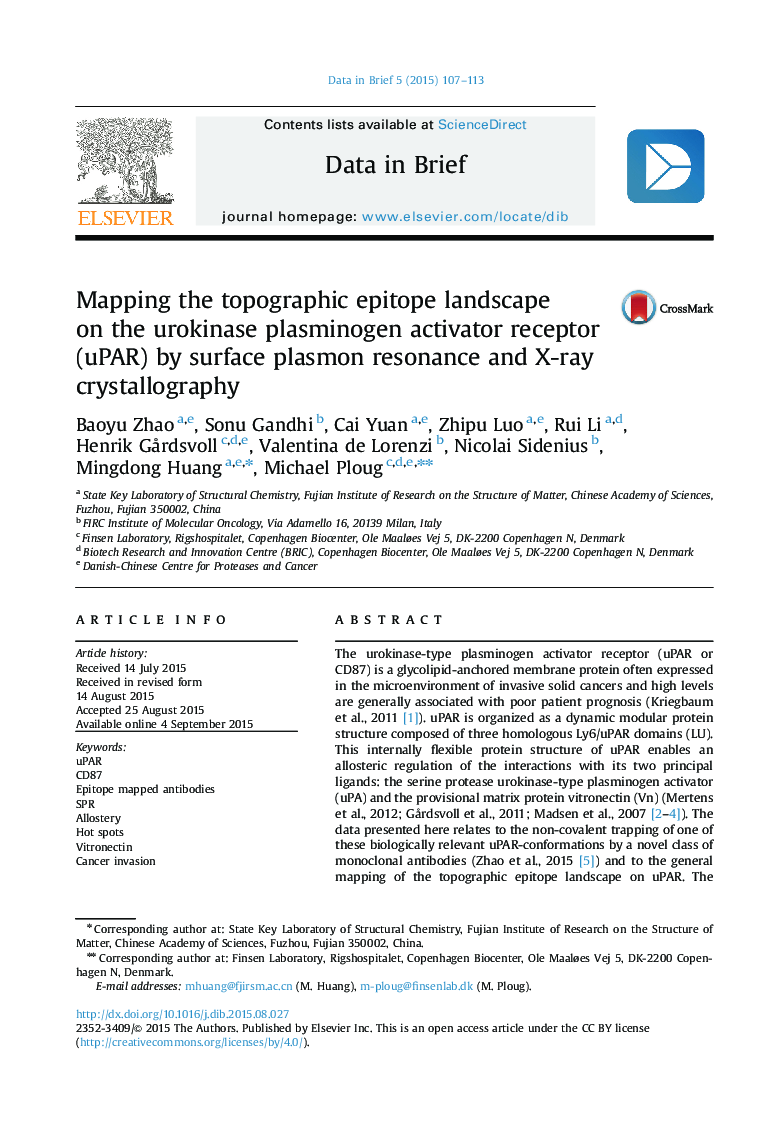| Article ID | Journal | Published Year | Pages | File Type |
|---|---|---|---|---|
| 174869 | Data in Brief | 2015 | 7 Pages |
The urokinase-type plasminogen activator receptor (uPAR or CD87) is a glycolipid-anchored membrane protein often expressed in the microenvironment of invasive solid cancers and high levels are generally associated with poor patient prognosis (Kriegbaum et al., 2011 [1]). uPAR is organized as a dynamic modular protein structure composed of three homologous Ly6/uPAR domains (LU).This internally flexible protein structure of uPAR enables an allosteric regulation of the interactions with its two principal ligands: the serine protease urokinase-type plasminogen activator (uPA) and the provisional matrix protein vitronectin (Vn) (Mertens et al., 2012; Gårdsvoll et al., 2011; Madsen et al., 2007 [2], [3] and [4]). The data presented here relates to the non-covalent trapping of one of these biologically relevant uPAR-conformations by a novel class of monoclonal antibodies (Zhao et al., 2015 [5]) and to the general mapping of the topographic epitope landscape on uPAR. The methods required to achieve these data include: (1) recombinant expression and purification of a uPAR-hybrid protein trapped in the desired conformation [patent; WO 2013/020898 A12013]; (2) developing monoclonal antibodies with unique specificities using this protein as antigen; (3) mapping the functional epitope on uPAR for these mAbs by surface plasmon resonance with a complete library of purified single-site uPAR mutants (Zhao et al., 2015; Gårdsvoll et al., 2006 [5] and [6]); and finally (4) solving the three-dimensional structures for one of these mAbs by X-ray crystallography alone and in complex with uPAR [deposited in the PDB database as 4QTH and 4QTI, respectively].
